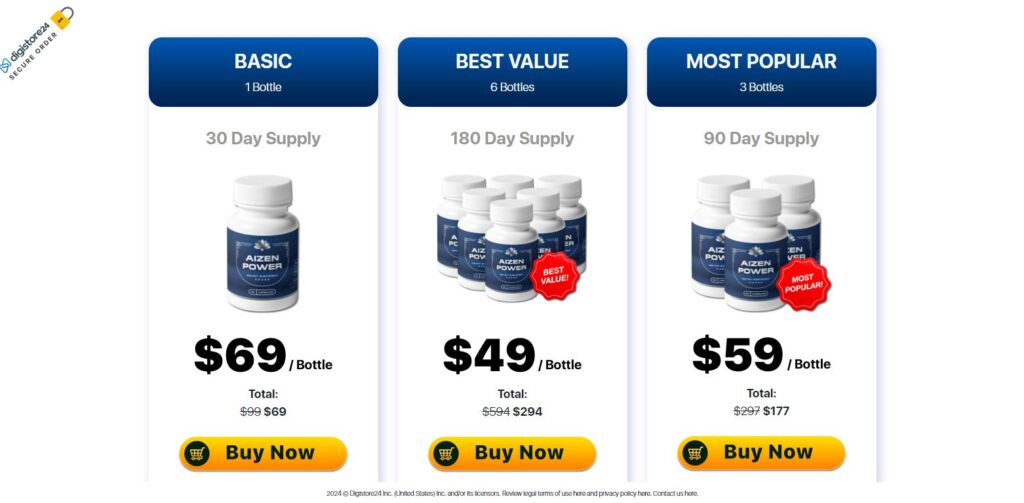10 ways to earn money as a student in 2025
In the ever-evolving landscape of the digital age, students have unprecedented access to diverse online opportunities that extend beyond the traditional realms of part-time jobs. Leveraging the power of the internet, students can harness their skills, creativity, and knowledge to carve out unique pathways for earning money while balancing academic commitments.
This article explores ten effective ways in which students can tap into the online world to supplement their income. From freelancing and virtual assistance to creating and selling online courses, each avenue provides students with the flexibility to work remotely and showcase their talents on a global scale.
Join us on this journey as we delve into the details of each method, offering insights, tips, and practical steps for students to navigate the digital landscape and unlock the full potential of online earning opportunities. Let’s explore how students can turn their skills into sources of income in the ever-expanding world of online possibilities.
Here is a quick look at the 10 best ways to earning online.
Freelance Writing
Online Tutoring
Virtual Assistance
Graphic Design
Affiliate Marketing
Video Editor
Online Surveys and Reviews
Stock Photography
Remote Internships
Create and Sell Online Courses
1. Freelance Writing:
Freelance writing is a versatile online job that allows students to use their writing skills to earn money. This field encompasses a wide range of opportunities, from blog posts and articles to product descriptions and marketing content.
How to Get Started:
Create a Portfolio: Build a portfolio showcasing your best writing samples. If you don’t have previous work, you can create sample pieces that highlight your writing style and skills.
Choose a Niche: Specializing in a particular niche can make you more appealing to clients. Whether it’s technology, health, finance, or lifestyle, having expertise in a specific area can set you apart.
Join Freelance Platforms: Sign up on popular freelancing websites such as Upwork, Fiverr, or Freelancer. Create a profile that clearly outlines your skills, experience, and what you offer as a writer.
Set Competitive Rates: Research the market rates for freelance writing in your chosen niche and set competitive yet realistic prices. As a beginner, you might need to start with lower rates to build your reputation.
Pitch to Clients: Actively pitch your services to potential clients. Craft personalized proposals that demonstrate your understanding of their needs and how you can fulfill them through your writing.
Deliver High-Quality Work: Consistently provide high-quality content to build a positive reputation. Satisfied clients are more likely to leave positive reviews and become repeat customers.
Network and Collaborate: Connect with other freelancers, clients, and writing communities. Networking can lead to new opportunities, collaborations, and valuable advice from experienced writers.
Expand Your Skill Set: As you gain experience, consider expanding your skill set. This could include learning about SEO (Search Engine Optimization), content marketing, or social media management to make yourself more versatile.
Meet Deadlines: Meeting deadlines is crucial in the freelance world. It builds trust with clients and increases the likelihood of repeat business. Manage your time effectively to ensure timely delivery of your work.
Request Feedback: After completing a project, ask clients for feedback. Positive feedback can enhance your profile and attract more clients. Constructive criticism, if any, can help you improve your skills.
Potential Challenges:
- Competition: Freelance writing is a competitive field. To stand out, focus on providing unique value and excellent customer service.
- Income Variability: Income can vary, especially when you’re starting. Establishing a consistent workflow and securing long-term clients can help stabilize your income.
Freelance writing is a rewarding online job for students, offering the flexibility to balance work with academic commitments while honing valuable communication and research skills.
2. Online Tutoring:
Online tutoring involves providing educational support to students over the internet. It’s a flexible way for students to share their expertise in specific subjects with others who need assistance.
How to Get Started:
Identify Your Strengths: Determine the subjects or topics in which you excel. Online tutoring is most effective when you can confidently teach and explain concepts.
Choose a Platform: Decide whether you want to join an established tutoring platform or offer your services independently. Platforms like Chegg Tutors, Tutor.com, and Wyzant connect tutors with students, while independent tutoring allows you to set your own terms.
Create a Profile: If using a platform, create a detailed and appealing profile that highlights your expertise, qualifications, and teaching style. Include information about your academic background and any relevant teaching experience.
Set Your Rates: Determine your tutoring rates. Consider factors such as your level of expertise, the complexity of the subject, and the platform’s guidelines. Be competitive but also reflective of your skills.
Establish a Schedule: Decide on your availability for tutoring sessions. Be clear about the days and times you’re available, considering time zones if you’re offering services globally.
Promote Your Services (if independent): If you choose to tutor independently, promote your services through social media, community bulletin boards, or by creating a personal website. Networking with classmates and professors can also lead to referrals.
Prepare Materials: Have a set of materials ready for tutoring sessions, such as notes, practice problems, or additional resources. Being well-prepared enhances the effectiveness of your tutoring.
Engage with Students: Actively engage with your students during sessions. Encourage them to ask questions and provide clear explanations. Tailor your teaching style to suit each student’s learning preferences.
Collect Feedback: Encourage students to provide feedback on your tutoring sessions. Positive feedback can attract more students, while constructive criticism helps you improve your teaching methods.
Stay Updated: Keep yourself informed about changes in curriculum or educational approaches. Staying updated allows you to offer the most relevant and helpful assistance.
Potential Challenges:
- Technical Issues: Ensure you have a stable internet connection and are familiar with the technology used for online tutoring to avoid disruptions during sessions.
- Managing Expectations: Clearly communicate your tutoring style and what students can expect from your sessions to avoid misunderstandings.
Online tutoring not only allows students to earn money but also provides an opportunity to share knowledge, enhance communication skills, and contribute to the academic success of others.
3. Virtual Assistant:
Virtual assistance involves providing administrative support to individuals or businesses remotely. As a virtual assistant (VA), students can offer a range of services to help clients streamline their operations.
How to Get Started:
Define Your Skills: Identify the skills you possess that can be valuable in a virtual assistance role. This may include organization, communication, data entry, customer service, and proficiency in software tools.
Create a Professional Profile: Develop a professional online presence. Create a resume or portfolio that outlines your skills, experiences, and the services you offer as a virtual assistant. You can use platforms like Upwork, Freelancer, or even LinkedIn to showcase your profile.
Choose Your Services: Decide on the specific services you want to offer. This could include email management, scheduling, data entry, social media management, bookkeeping, or customer support. Tailor your services to match your skills and the needs of potential clients.
Set Your Rates: Determine your pricing structure. Virtual assistants may charge hourly, per task, or offer package deals. Research industry standards and set rates that reflect your skills and experience level.
Explore Virtual Assistant Platforms: Join virtual assistant platforms where clients look for remote administrative support. Websites like Upwork, Time Etc, or Zirtual connect virtual assistants with businesses seeking help.
Build a Professional Website: Consider creating a professional website to showcase your services, experience, and client testimonials. A website adds credibility and makes it easier for potential clients to learn about your skills.
Utilize Productivity Tools: Familiarize yourself with popular productivity tools such as Trello, Asana, or Slack. Many clients use these tools to manage projects and communication, and being proficient in them can enhance your value.
Communicate Effectively: Strong communication skills are crucial. Respond promptly to inquiries, be clear in your communication, and set expectations regarding response times and availability.
Maintain Confidentiality: Virtual assistants often handle sensitive information. Demonstrate your commitment to confidentiality and data security to build trust with clients.
Expand Your Skill Set: As you gain experience, consider expanding your skill set to offer a broader range of services. This may include learning new software, gaining proficiency in project management, or exploring additional administrative skills.
Potential Challenges:
- Time Management: Balancing multiple tasks from different clients requires effective time management.
- Client Dependence: Relying on a few clients can be risky. Aim to diversify your client base to reduce dependency on a single source of income.
Becoming a virtual assistant provides students with a flexible and remote job option while developing valuable organizational and administrative skills. You can find remote jobs as a virtual assistant at remotepursuit.com.
4. Graphic Design:
Graphic design involves creating visual content to communicate messages effectively. It’s a versatile field that includes designing logos, branding materials, social media graphics, websites, and various other visual elements.
How to Get Started:
Develop Your Skills: Hone your graphic design skills by learning how to use popular design software such as Adobe Illustrator, Photoshop, or Canva. Practice creating a variety of designs to build a diverse portfolio.
Create a Portfolio: Assemble a strong portfolio showcasing your best work. Include a variety of projects to demonstrate your versatility, whether it’s logo design, web design, or social media graphics.
Choose Your Niche: Consider specializing in a particular niche within graphic design. This could be logo design, branding, UI/UX design, or illustration. Focusing on a niche can help you target specific clients.
Set Your Rates: Determine your pricing structure. Graphic designers may charge per project, hourly, or based on the complexity of the design. Research industry standards and set competitive rates that reflect your skills.
Join Design Platforms: Sign up on design-specific platforms like 99designs, Dribbble, or Upwork. These platforms connect designers with clients looking for design services. Create a profile that showcases your portfolio and expertise.
Network with Other Designers: Engage with other designers on social media platforms like Instagram, Twitter, or LinkedIn. Networking can lead to collaborations, mentorship, and exposure to potential clients.
Stay Updated on Design Trends: Graphic design trends evolve, so it’s important to stay updated. Follow design blogs, attend webinars, and engage in online communities to stay informed about the latest trends and techniques.
Communicate Clearly with Clients: Effective communication is key. Clearly understand your client’s requirements, ask relevant questions, and provide regular updates during the design process to ensure client satisfaction.
Ask for Feedback: After completing a project, ask clients for feedback. Positive testimonials can boost your credibility and attract more clients. Constructive feedback can also help you refine your skills.
Offer Additional Services: Expand your services to include related offerings, such as social media graphics, marketing collateral, or website design. This can increase your value to clients and lead to more diverse projects.
Potential Challenges:
- Subjectivity of Design: Design is subjective, and clients may have different preferences. Develop strong communication skills to understand and meet client expectations.
- Managing Multiple Projects: Juggling multiple design projects requires effective time management to ensure timely delivery and maintain quality.
Graphic design offers a creative outlet for students while providing opportunities to earn money online. As the demand for visual content continues to grow, skilled graphic designers are in high demand.
5. Affiliate Marketing:
Affiliate marketing is a performance-based marketing strategy where individuals earn a commission for promoting products or services and driving sales through their unique affiliate links. It’s a popular way for students to earn money online without the need to create or own the products.
How to Get Started:
Select a Niche: Choose a niche or industry that aligns with your interests or expertise. Focusing on a specific niche allows you to target a more relevant audience.
Research Affiliate Programs: Explore affiliate programs related to your chosen niche. Many companies offer affiliate programs, including Amazon Associates, ShareASale, ClickBank, and individual company programs.
Sign Up for Affiliate Programs: Register for the affiliate programs you’re interested in. Once approved, you’ll gain access to unique affiliate links that track your referrals and sales.
Build an Online Presence: Establish an online presence through a blog, website, or social media platforms. Create content related to your niche, such as product reviews, tutorials, or informative articles.
Create Quality Content: Produce high-quality, valuable content that attracts your target audience. This can include blog posts, videos, or social media posts that incorporate your affiliate links naturally.
Disclose Your Affiliation: Be transparent with your audience by disclosing your affiliate relationship. This builds trust and credibility, and it’s also a legal requirement in many places.
Optimize for SEO: Implement basic SEO strategies to improve the visibility of your content. This includes using relevant keywords, optimizing meta tags, and creating content that provides value to your audience.
Promote Strategically: Strategically promote products or services by understanding your audience’s needs and preferences. Tailor your promotional efforts to resonate with your followers.
Track and Analyze Performance: Use analytics tools provided by affiliate programs to track the performance of your affiliate links. Monitor clicks, conversions, and commissions to understand what works best.
Experiment and Adjust: Be open to experimenting with different promotional strategies. Analyze the results and adjust your approach based on what yields the best outcomes.
Potential Challenges:
Saturation in Some Niches: Popular niches may have intense competition, making it challenging to stand out. Consider finding a unique angle or focusing on a less competitive sub-niche.
Dependency on Affiliate Programs: Relying solely on one or a few affiliate programs can be risky. Diversify by promoting products from various programs to mitigate potential income fluctuations.
Affiliate marketing is a scalable and low-risk way for students to earn money online, especially for those who enjoy creating content and have a good understanding of digital marketing principles. Success often comes with consistency, strategic planning, and adapting to the changing needs of your audience. You can master the art of affiliate marketing and what it takes learning every step from Mastering Affiliate Marketing: Tips and Tricks for Success.

6. Video Editor:
In the dynamic realm of online content, video editing has emerged as a pivotal skill, creating opportunities for students to turn their proficiency into a lucrative source of income. Whether it’s crafting engaging YouTube videos, editing promotional content for businesses, or contributing to the growing world of online entertainment, video editors are in high demand.
How to Get Started:
Build Your Skill Set: Begin by honing your video editing skills. Familiarize yourself with industry-standard software like Adobe Premiere Pro, Final Cut Pro, or DaVinci Resolve. Practice different editing styles and techniques to diversify your capabilities.
Create a Showreel: Develop a captivating showreel that showcases your best work. Include snippets from various projects, demonstrating your ability to edit for different genres, tones, and purposes. Your showreel is your visual portfolio, so make it compelling.
Choose Your Niche: Identify a niche or industry you’re passionate about. Whether it’s travel vlogging, educational content, or corporate videos, specializing in a particular area allows you to tailor your services and attract specific clients.
Create an Online Presence: Establish a professional online presence. Build a portfolio website or use platforms like Behance or Vimeo to showcase your work. Clearly outline your services, showcase your showreel, and provide contact information for potential clients.
Join Freelance Platforms: Register on freelance platforms such as Upwork, Fiverr, or Freelancer. These platforms connect video editors with clients seeking editing services. Create a profile that highlights your expertise, past projects, and client testimonials.
Network within Your Community: Leverage social media platforms to connect with potential clients and other professionals in the industry. Join relevant groups, participate in discussions, and share your work to increase visibility within your community.
Offer Competitive Pricing: Research industry rates and set competitive yet realistic pricing for your services. Consider offering package deals or discounts for long-term projects to attract and retain clients.
Provide Excellent Customer Service: Excellent customer service is crucial in the freelance world. Respond promptly to client inquiries, be transparent about timelines, and seek feedback to continuously improve your services.
Stay Updated with Trends: Stay abreast of the latest video editing trends and techniques. This not only keeps your skills relevant but also positions you as a knowledgeable and forward-thinking editor in the eyes of potential clients.
Collaborate and Seek Feedback: Collaborate with other content creators or professionals in your niche. Seeking feedback not only helps you grow but also establishes valuable connections that can lead to more opportunities.
Potential Challenges:
Intense Competition: The field of video editing is highly competitive. To stand out, focus on developing a unique style and offering specialized services.
Managing Workload: Balancing multiple projects and meeting deadlines can be challenging. Effective time management and setting realistic expectations are crucial.
Technical Hurdles: Dealing with technical issues such as software glitches or hardware malfunctions can disrupt workflow. Stay updated on software updates and have contingency plans in place.
Embarking on a journey as a video editor offers students a chance to blend creativity with a promising income stream. By strategically navigating the digital landscape and continuously refining their craft, aspiring video editors can carve a niche for themselves in the vast and dynamic world of online content creation.
7. Online Surveys and Reviews:
Participating in online surveys and writing reviews is a straightforward way for students to earn money or gift cards. Companies often seek consumer opinions on products, services, and trends, and they are willing to reward participants for their feedback.
How to Get Started:
Join Survey and Review Platforms: Sign up on reputable survey and review platforms. Some popular options include Swagbucks, Survey Junkie, Amazon’s Mechanical Turk, and Pinecone Research.
Complete Profile Surveys: Many platforms require you to complete profile surveys when you first sign up. These surveys help match you with relevant opportunities. Provide accurate information to receive more targeted surveys.
Be Consistent: Regularly check the platforms for available surveys or review opportunities. Consistency is key to accumulating points or rewards over time.
Explore Different Platforms: Join multiple survey and review platforms to maximize your earning potential. Different platforms may offer different types of surveys or review tasks.
Participate in Focus Groups: Some platforms offer opportunities to participate in focus groups or discussions. These activities often pay more and provide a chance to share more in-depth opinions.
Read and Follow Guidelines: When participating in surveys or reviews, carefully read and follow the guidelines provided. Some opportunities may have specific requirements or instructions.
Redeem Rewards: Accumulate points or rewards through survey completions and reviews. Most platforms offer a variety of redemption options, including cash, gift cards, or merchandise.
Refer Friends (if available): Some platforms have referral programs that allow you to earn additional rewards by referring friends. Share your referral links with friends who may be interested in participating.
Stay Safe and Avoid Scams: Be cautious of platforms that ask for payment upfront or promise unrealistic earnings. Stick to well-known and reputable survey and review sites to ensure your safety.
Manage Your Time: Set aside dedicated time for participating in surveys and reviews. Balancing this with other commitments ensures you can consistently earn rewards without affecting your studies.
Potential Challenges:
Low Earning Potential: The earnings from individual surveys or reviews may be modest. Consider it as a supplementary income source rather than a primary source of income.
Survey Availability: Surveys and review opportunities may not always be readily available. Be patient and consistent in checking for new opportunities.
Participating in online surveys and reviews is a simple way for students to earn some extra income or receive gift cards while sharing their opinions. It’s important to manage expectations, be cautious of scams, and use these platforms as a supplemental income source.
8. Stock Photography:
Stock photography involves creating and licensing images for commercial use. Photographers, including students, can contribute their photos to stock photo websites, allowing businesses, bloggers, and designers to purchase and use their images.
How to Get Started:
Create High-Quality Images: Focus on capturing high-quality, visually appealing images. Ensure that your photos are well-composed, well-lit, and free of any trademarks or copyrighted material.
Understand Stock Photography Licensing: Familiarize yourself with stock photography licensing terms. Understand the difference between royalty-free and rights-managed licenses, as this affects how clients can use your images.
Choose a Stock Photo Platform: Select a stock photo platform to showcase and sell your images. Popular platforms include Shutterstock, Adobe Stock, iStock, and Alamy. Each platform has its submission guidelines and payment structures.
Create a Contributor Account: Sign up and create a contributor account on the chosen stock photo platform. You may need to provide sample images for review before gaining approval as a contributor.
Keyword and Describe Your Images: Effectively keyword and describe your images to make them easily discoverable by buyers. Use accurate and relevant keywords that describe the content of your photos.
Follow Technical Guidelines: Adhere to technical guidelines provided by the stock photo platform. Ensure your images meet the required resolution, format, and quality standards.
Diversify Your Portfolio: Build a diverse portfolio by uploading images across different categories and themes. Cater to various needs and preferences to attract a wider audience.
Understand Market Trends: Stay informed about current design and advertising trends. This helps you create images that are in demand and align with the needs of buyers.
Promote Your Portfolio: Share your portfolio on social media, personal websites, or photography communities. Promoting your work increases its visibility and may attract more potential buyers.
Monitor Sales and Adjust Strategy: Regularly check your sales and analyze which images perform well. Use this data to adjust your strategy, focusing on the types of images that resonate with buyers.
Potential Challenges:
Competition: The stock photography market is competitive. To stand out, focus on creating unique and high-quality images that meet the needs of a specific audience.
Selective Approval: Stock photo platforms may have stringent approval processes. Ensure your images meet the platform’s standards to increase the chances of acceptance.
Stock photography is a great way for students with photography skills to earn passive income. By consistently contributing high-quality images and staying informed about market trends, photographers can build a portfolio that appeals to a wide range of buyers.
9. Remote Internships:
A remote internship allows students to gain valuable work experience and enhance their skills while working from a location of their choice. Remote internships have become increasingly popular, offering flexibility and the opportunity to collaborate with companies and organizations worldwide.
How to Get Started:
Search for Remote Internship Opportunities: Look for remote internship opportunities on dedicated internship websites, company career pages, or professional networking platforms like LinkedIn. Websites such as remotepursuit.com can be useful in finding remote internship positions.
Optimize Your Resume and Cover Letter: Tailor your resume and cover letter to highlight relevant skills, experiences, and your ability to work independently. Emphasize any remote work experience or showcase your adaptability to virtual work environments.
Create a Professional Online Presence: Build a professional online presence on platforms like LinkedIn. Showcase your skills, experiences, and projects. Connect with professionals and join relevant groups to stay updated on remote internship opportunities.
Prepare for Virtual Interviews: As remote interviews become common, prepare for virtual interviews. Test your internet connection, familiarize yourself with video conferencing tools, and be ready to discuss your skills, experiences, and motivation for the internship.
Research Companies and Roles: Research the companies offering remote internships and understand the specific roles. Tailor your applications to align with the company’s values and the responsibilities of the internship.
Set Clear Expectations: Before accepting a remote internship, clarify expectations regarding work hours, communication channels, and deliverables. Discuss the project timeline, goals, and how performance will be evaluated.
Stay Organized: Remote internships require strong organizational skills. Use tools like project management software, calendars, and to-do lists to stay on top of assignments, deadlines, and virtual meetings.
Communicate Effectively: Maintain clear and professional communication with your supervisor and colleagues. Use email, messaging platforms, and video calls appropriately. Regularly update your team on your progress.
Network with Colleagues: Despite the virtual setting, actively network with colleagues and professionals in the organization. Attend virtual team meetings, participate in company-wide events, and connect with coworkers on professional platforms.
Seek Feedback and Learn: Actively seek feedback on your performance. Use the remote internship as a learning opportunity to gain insights into your chosen industry, develop new skills, and make meaningful contributions to projects.
Potential Challenges:
Time Zone Differences: If working with a team spread across different time zones, be mindful of time zone differences and establish clear communication protocols.
Limited In-Person Interaction: Remote internships may lack the in-person networking opportunities of traditional internships. Make an effort to connect with colleagues virtually and participate in virtual social events.
Remote internships offer students the chance to gain real-world experience, build professional connections, and develop skills relevant to their career goals—all from the comfort of their own space. Successfully navigating a remote internship requires strong communication skills, adaptability, and a proactive approach to work.
10. Create and Sell Online Courses:
Creating and selling online courses is a lucrative way for students to share their expertise and knowledge while earning income. With the rise of e-learning platforms, individuals can design and market their courses to a global audience.
How to Get Started:
Identify Your Expertise: Determine your area of expertise or a subject you are passionate about and knowledgeable in. This could be academic subjects, programming languages, graphic design, language learning, or any skill you can teach effectively.
Research Your Target Audience: Understand your target audience. Who would benefit from your course? Consider the skill level, interests, and needs of your potential students to tailor your course content accordingly.
Choose an E-Learning Platform: Select an e-learning platform to host and sell your courses. Popular platforms include Udemy, Teachable, Thinkific, and Skillshare. Each platform has its features, pricing models, and audience, so choose one that aligns with your goals.
Create High-Quality Content: Develop engaging and high-quality course content. Plan your lessons, create multimedia elements like videos, presentations, quizzes, and supplementary materials. Ensure that your content is well-organized and easy to understand.
Set a Competitive Price: Determine a fair and competitive price for your course. Consider factors such as the value you provide, the length of the course, and the pricing trends within your niche.
Build a Professional Brand: Create a professional brand for your courses. Design a logo, choose a color scheme, and create a compelling course description. A professional brand builds trust and attracts potential students.
Optimize for Search Engines: Optimize your course title, description, and other metadata for search engines. This helps your course get discovered by individuals searching for topics related to your content.
Promote Your Course: Develop a marketing strategy to promote your course. Use social media, email marketing, and other online channels to reach your target audience. Consider offering limited-time promotions or discounts to attract initial students.
Collect and Act on Feedback: Encourage students to provide feedback on your course. Use this feedback to improve your content, address any issues, and enhance the overall learning experience.
Stay Updated and Expand: Regularly update your course content to keep it relevant. Consider expanding your course offerings based on market demand or creating advanced courses for students who have completed your initial offerings.
Potential Challenges:
Competition: The e-learning market is competitive. Focus on creating unique and valuable content to stand out in your niche.
Technical Challenges: Familiarize yourself with the technical aspects of your chosen e-learning platform. Ensure your videos are of high quality, and troubleshoot any technical issues that may arise.
Creating and selling online courses is an excellent way for students to leverage their expertise, generate income, and contribute to the education of others. With dedication and strategic marketing, this online venture can become a sustainable source of revenue.
10 ways to earn money as a student in 2025 Read More »





























